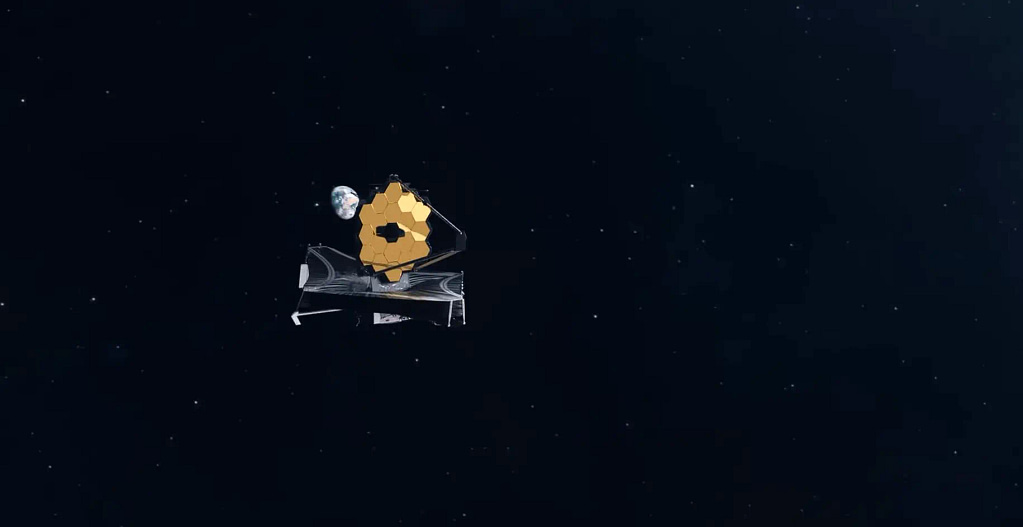The James Webb Space Telescope, often referred to as the JWST, has made some groundbreaking discoveries that are radically reshaping our understanding of the universe. In a recent study published in the journal Nature, the JWST has detected objects dating back to the universe’s Dark Ages, potentially vast mature galaxies that existed 500 to 700 million years after the universe’s inception. This discovery challenges our prior beliefs about galaxy formation and has opened up new realms of inquiry.
The JWST, which began its journey in 2015, has been a collaborative effort involving more than 80 specialists from 10 countries. It has played a crucial role in identifying galaxies from incredibly early periods in the distant cosmos, allowing us to detect such remote galaxies for the first time and validate their distance through spectroscopy. But what exactly have we learned from the JWST’s observations, and how has it advanced our cosmic understanding?
When the JWST first shared its detailed pictures in July 2022, scientists were stunned by what they saw. The galaxies it revealed were so large that they initially wondered if there was an error in the readings. This discovery has come faster than expected and has challenged our previous estimates of the number of stars in the universe at this point in its timeline. The data from the JWST suggests that the number of stars is 100 times more than we previously thought, even if we reduce this number by half.
The JWST’s observations have not only unveiled the existence of these ancient galaxies but also allowed astronomers to identify the oldest and most distant galaxies yet. Some of these galaxies date back to less than 400 million years after the Big Bang, with the telescope capturing light from galaxies over 13.4 billion years old. These findings have rewritten the record of the universe’s history, as some of these galaxies might date back over 150 million years earlier than the oldest ones identified by the Hubble Space Telescope.
How Do We Measure Distance in the Universe?
To understand how astronomers determine the distance of these galaxies, we need to consider the concept of redshift. As the universe expands, far-off objects appear to drift away from us, causing their light to elongate into redder, longer wavelengths. This phenomenon is known as the Doppler effect, and it is a key tool in measuring the distance of objects in the cosmos.
While photos taken with different filters can provide rough estimates of redshift, spectroscopy is required for precise measurements. Spectroscopy breaks an object’s light into its constituent colors or wavelengths, providing more accurate distance measurements. The JWST’s data has allowed us to gain a clearer picture of these galaxies, their true brightness, and the number of stars they hold, enriching our understanding of how galaxies have evolved over time.
The discovery of these early galaxies, often referred to as “Universe Breakers,” has challenged our preconceived notions about galaxy formation. The traditional belief was that galaxies started small and gradually grew over time. However, the JWST’s findings have forced us to reconsider this theory. These galaxies were not small in their early stages; they were immense and mature, indicating a more complex path to their formation.
The JWST’s success in these discoveries can be attributed to its advanced instruments, including the near-infrared camera and near-infrared spectrograph. These instruments played a pivotal role in the JWST’s project, where they observed the Hubble Ultra Deep Field region by studying nine infrared wavelength bands. This effort allowed the telescope to spot almost 100,000 far-off galaxies and gather light from 250 faint galaxies over three days.
Accurate redshift values obtained from this data have been essential in understanding the true brightness of these galaxies and the number of stars they contain. As a result, the JWST has significantly advanced our cosmic understanding and prompted us to rethink established theories about galaxy formation.
The JWST’s observations have not been limited to galaxies; they have also potentially identified the oldest black hole in the universe. This colossal black hole, weighing 10 million times the mass of the Sun, sits at the center of a developing galaxy just 570 million years after the universe’s birth. This discovery challenges our understanding of how quickly such massive black holes could have formed.
The early emergence of black holes in the young universe remains a mystery, and researchers are still hunting for even older primordial black holes that might have originated right after the Big Bang. The JWST’s findings suggest that these ancient black holes might have had a more profound impact on the universe’s early days than previously thought.
Two main theories attempt to explain the presence of black holes in our universe. They could be remnants of massive stars that formed faster than today’s familiar stars, or they could have emerged from dense gas clouds that suddenly collapsed, creating vast voids in space-time. Another theory suggests that they could be remnants of population three stars, thought to have formed 200 million years after the Big Bang, which exploded and left behind black holes.
The mid-infrared instrument and near-infrared camera of the JWST played a crucial role in detecting the black hole. Using integrated spectrographs to break down the light into its various frequencies, the JWST has allowed us to gain insights into the early emergence of black holes. The search for even older primordial black holes continues, and the JWST’s findings hint at the significant impact these ancient black holes might have had on the early universe.
The Ongoing Journey of the James Webb Space Telescope
As the JWST continues its journey, we can anticipate a series of transformative discoveries that will enhance our grasp of the vast universe. From the birth of galaxies and stars to the intricacies of dark matter and energy, the JWST is set to uncover more secrets of the cosmos.
In conclusion, the James Webb Space Telescope has already made remarkable contributions to our understanding of the universe. Its groundbreaking discoveries have challenged our preconceptions and opened up new realms of inquiry. As it progresses in its journey, the JWST promises to continue unraveling the mysteries of the cosmos, providing us with a clearer picture of the universe’s history and evolution.




